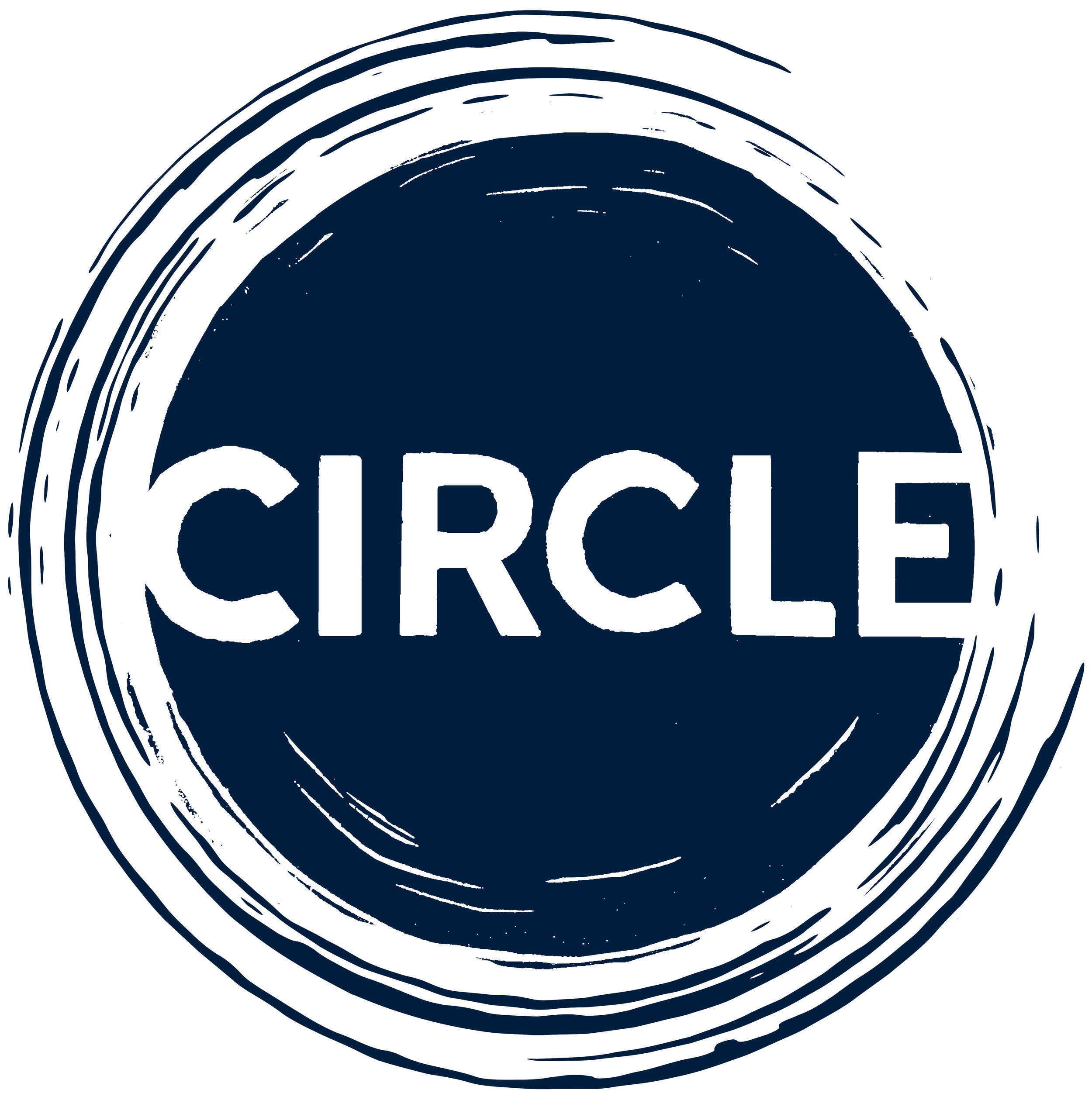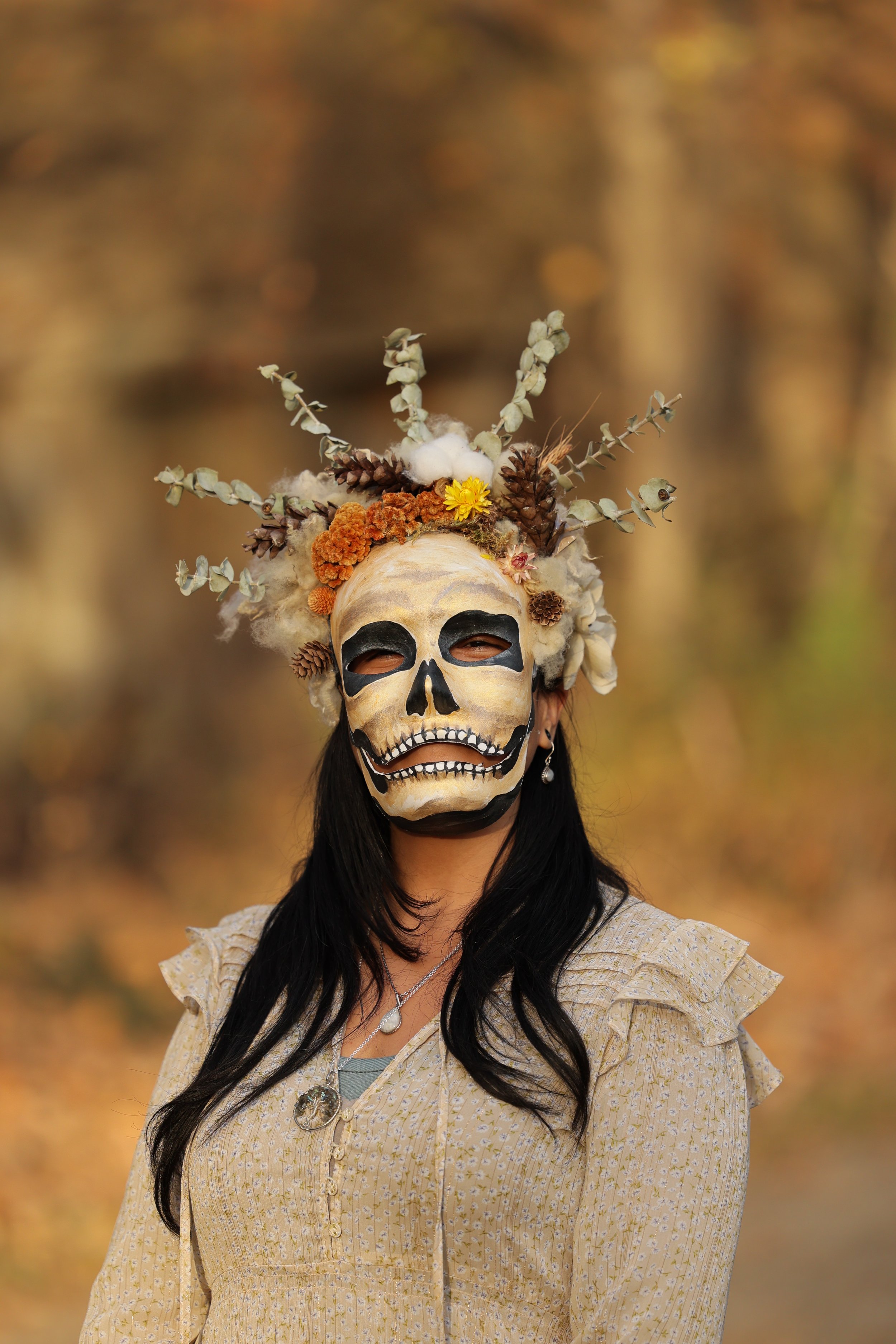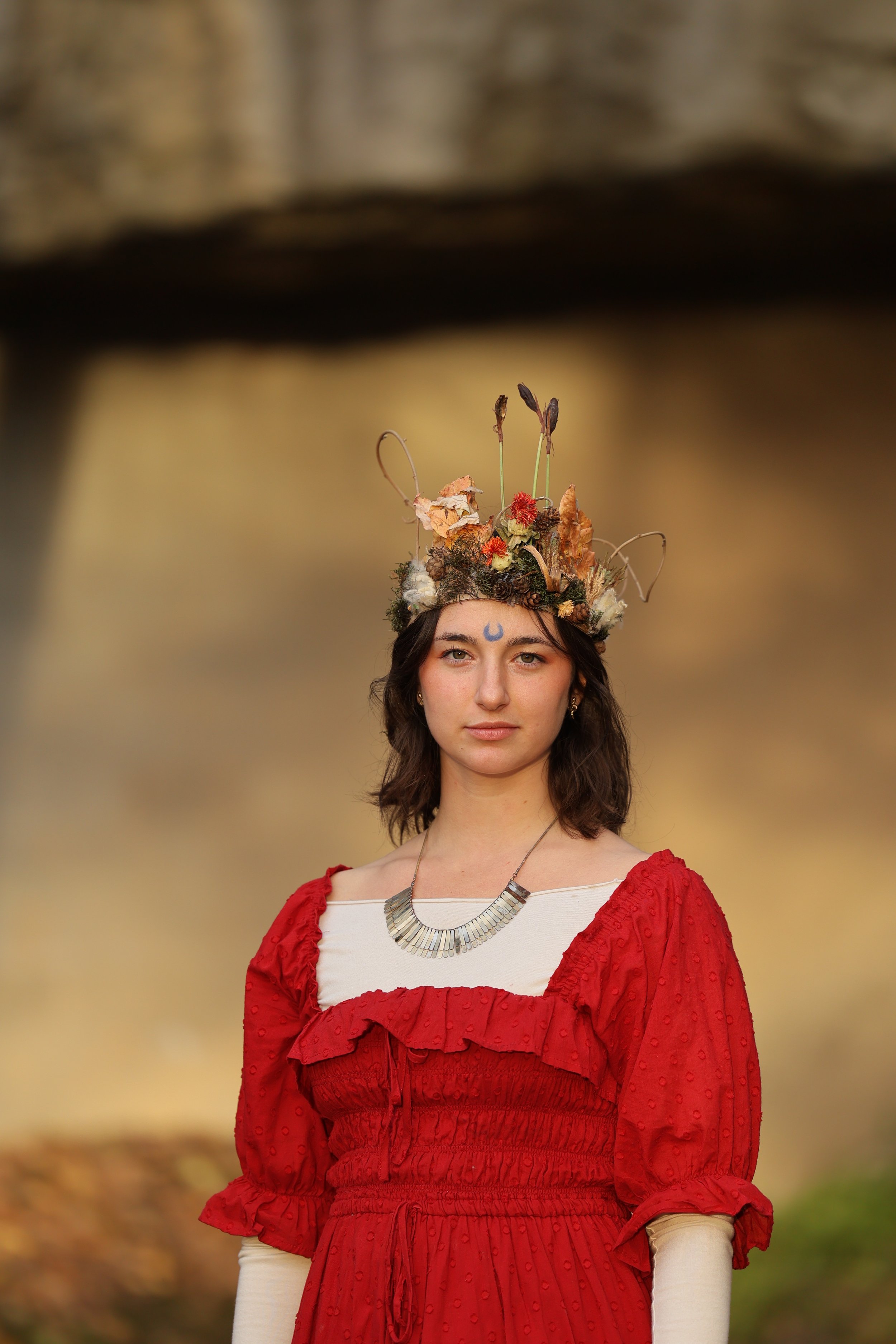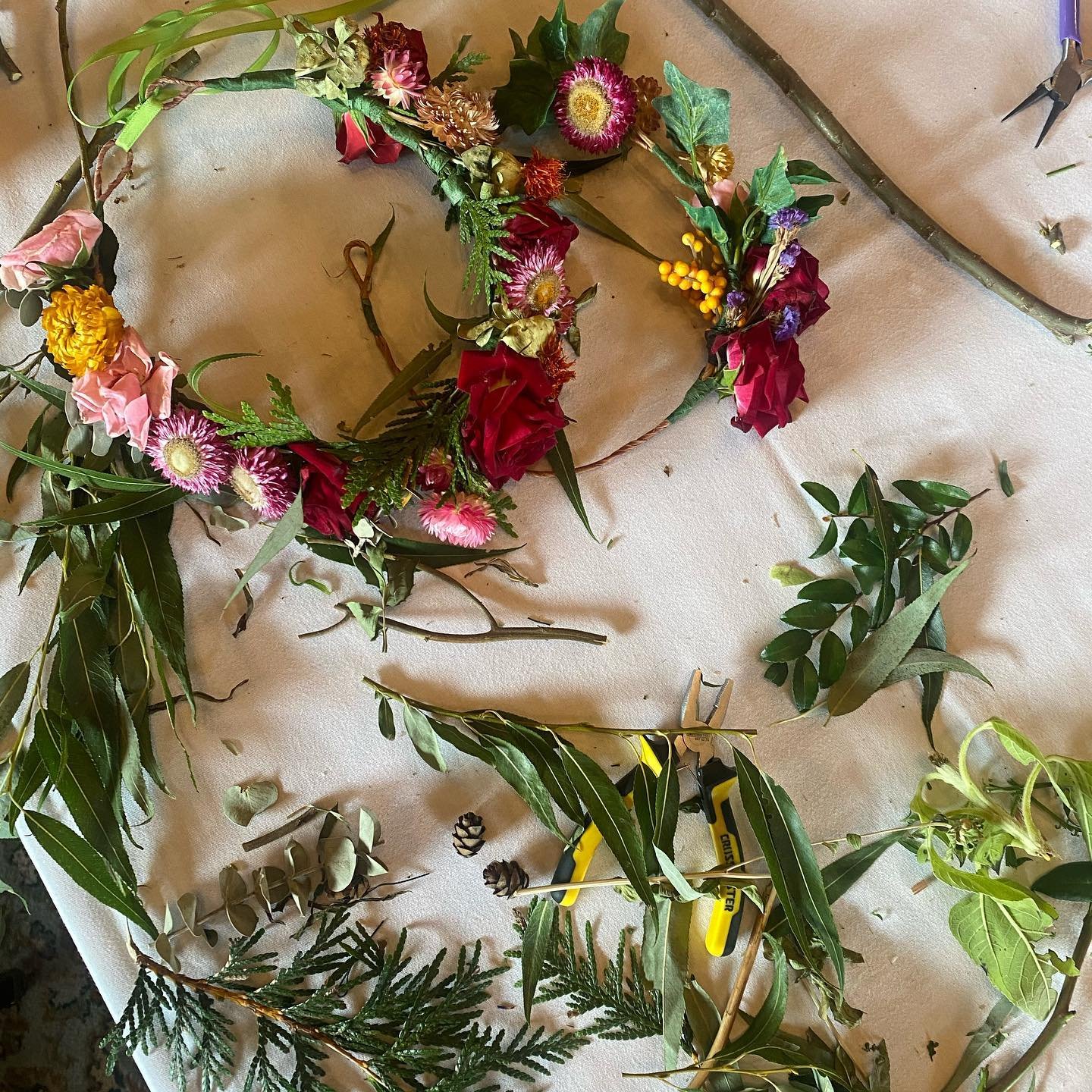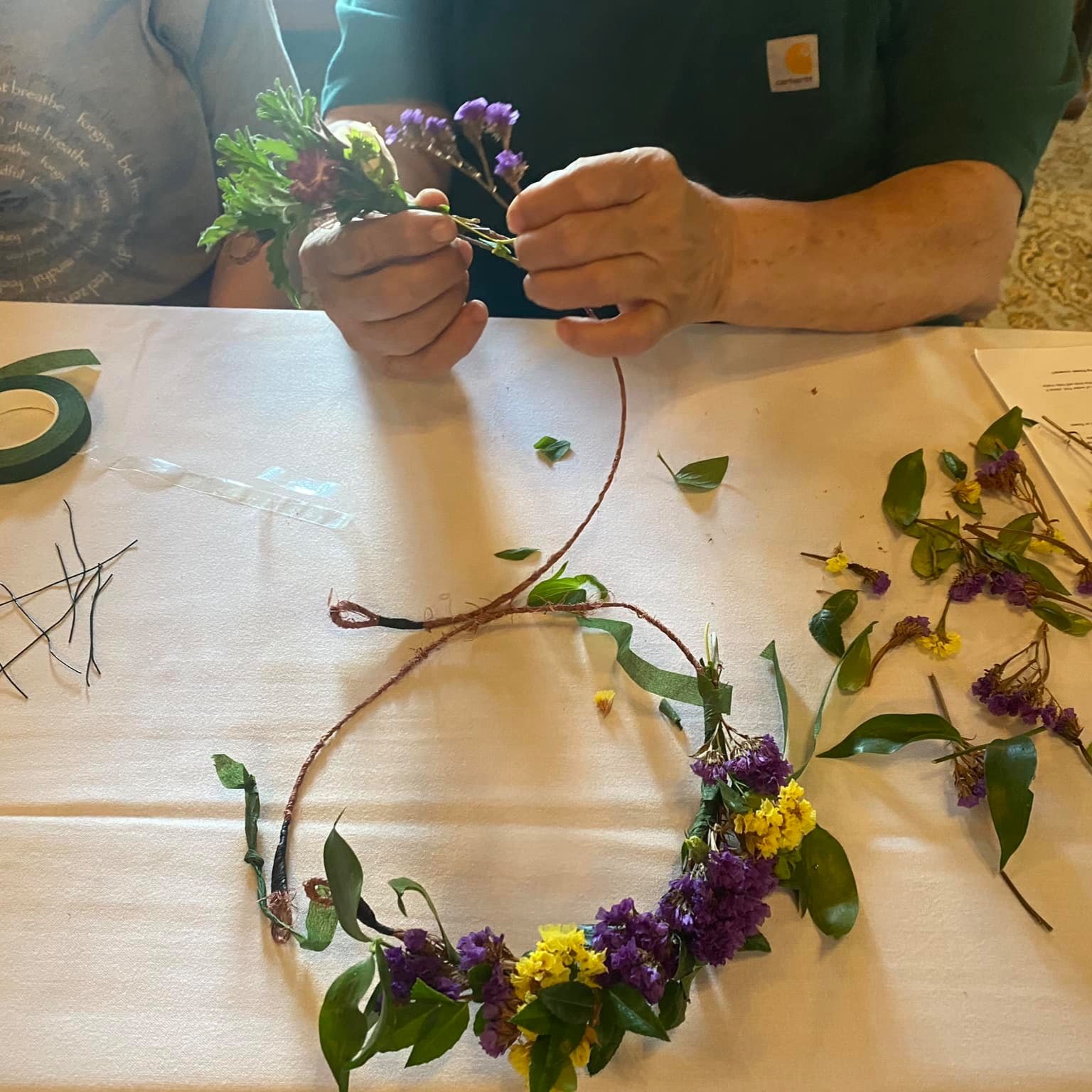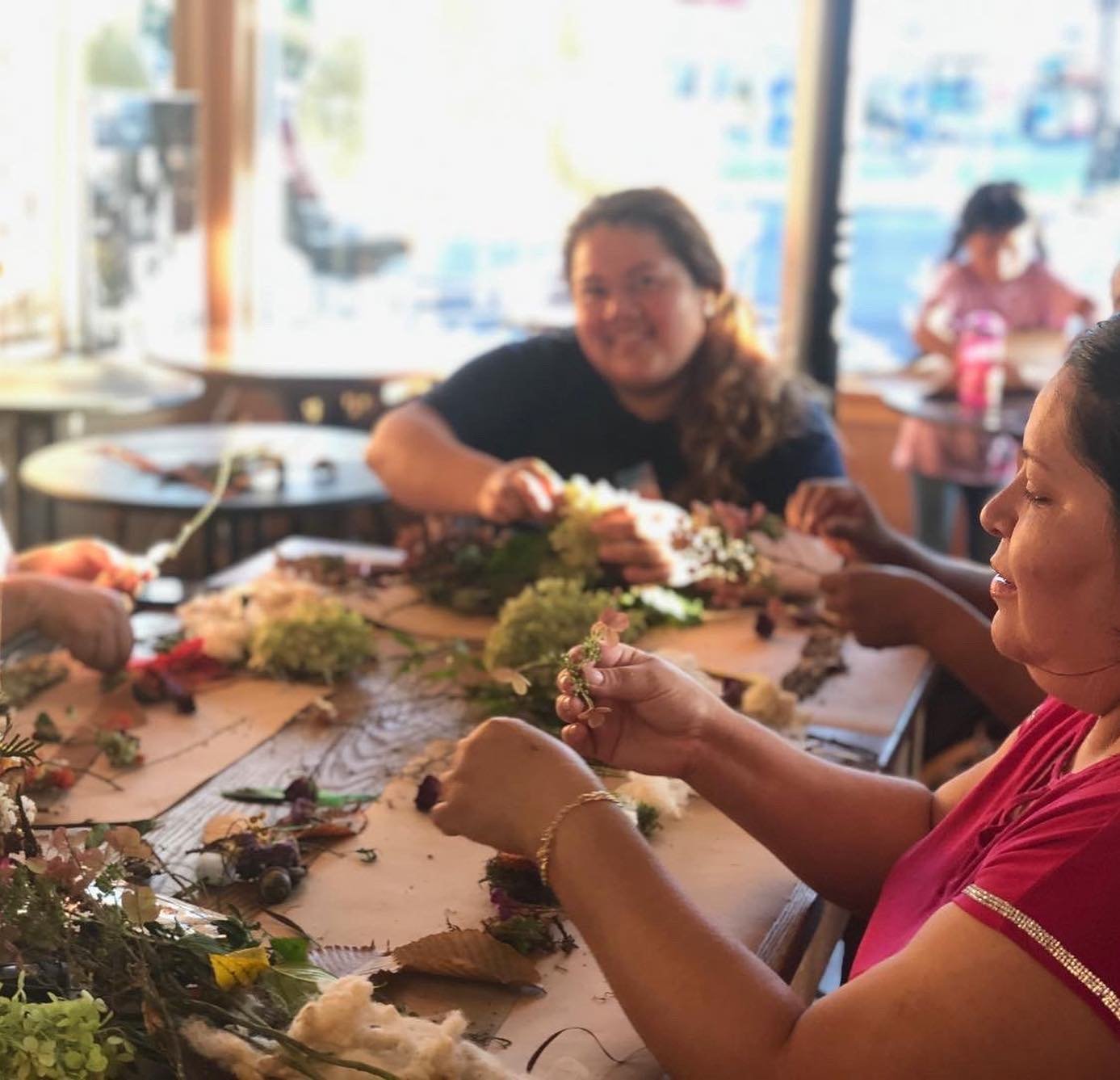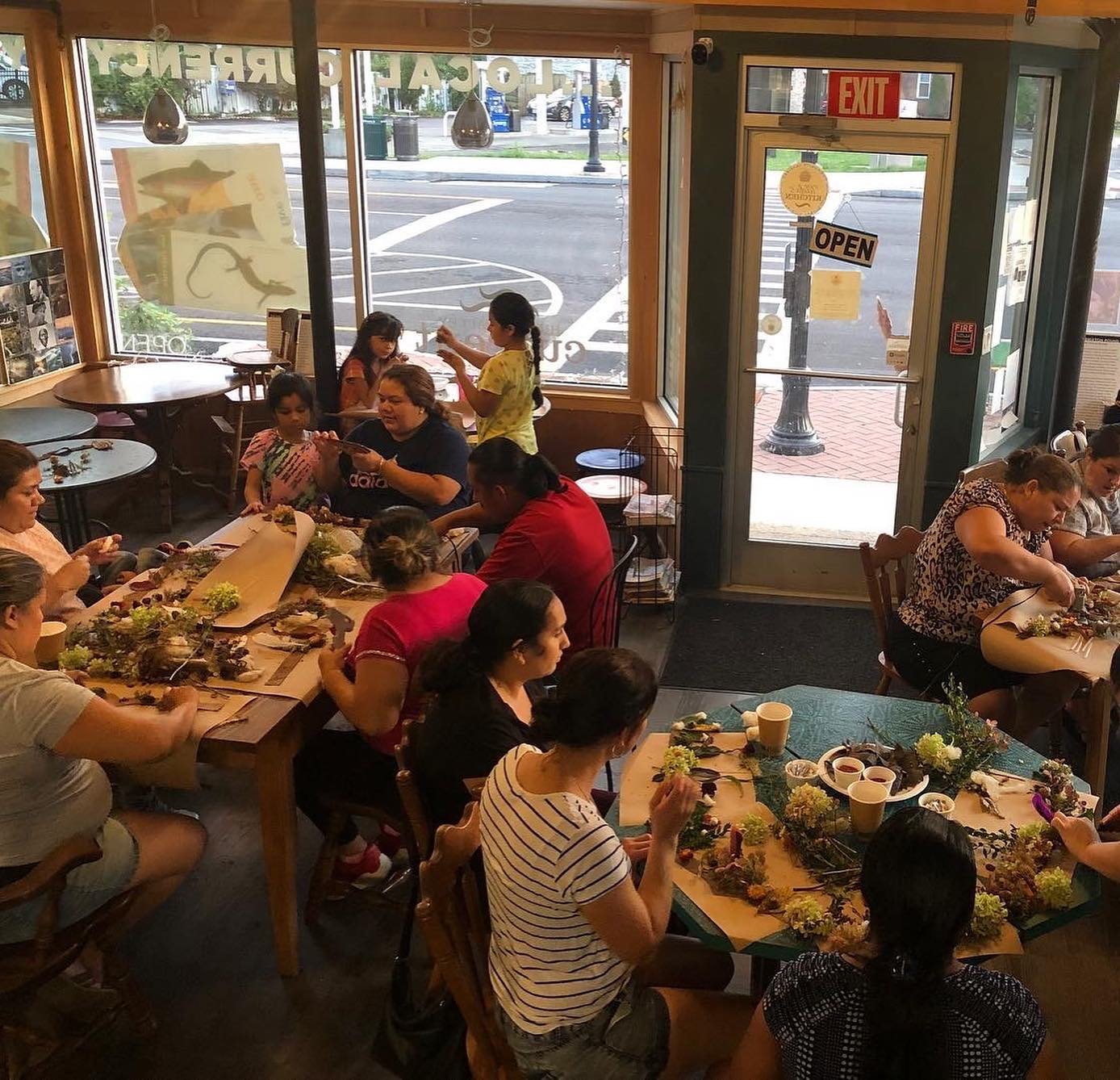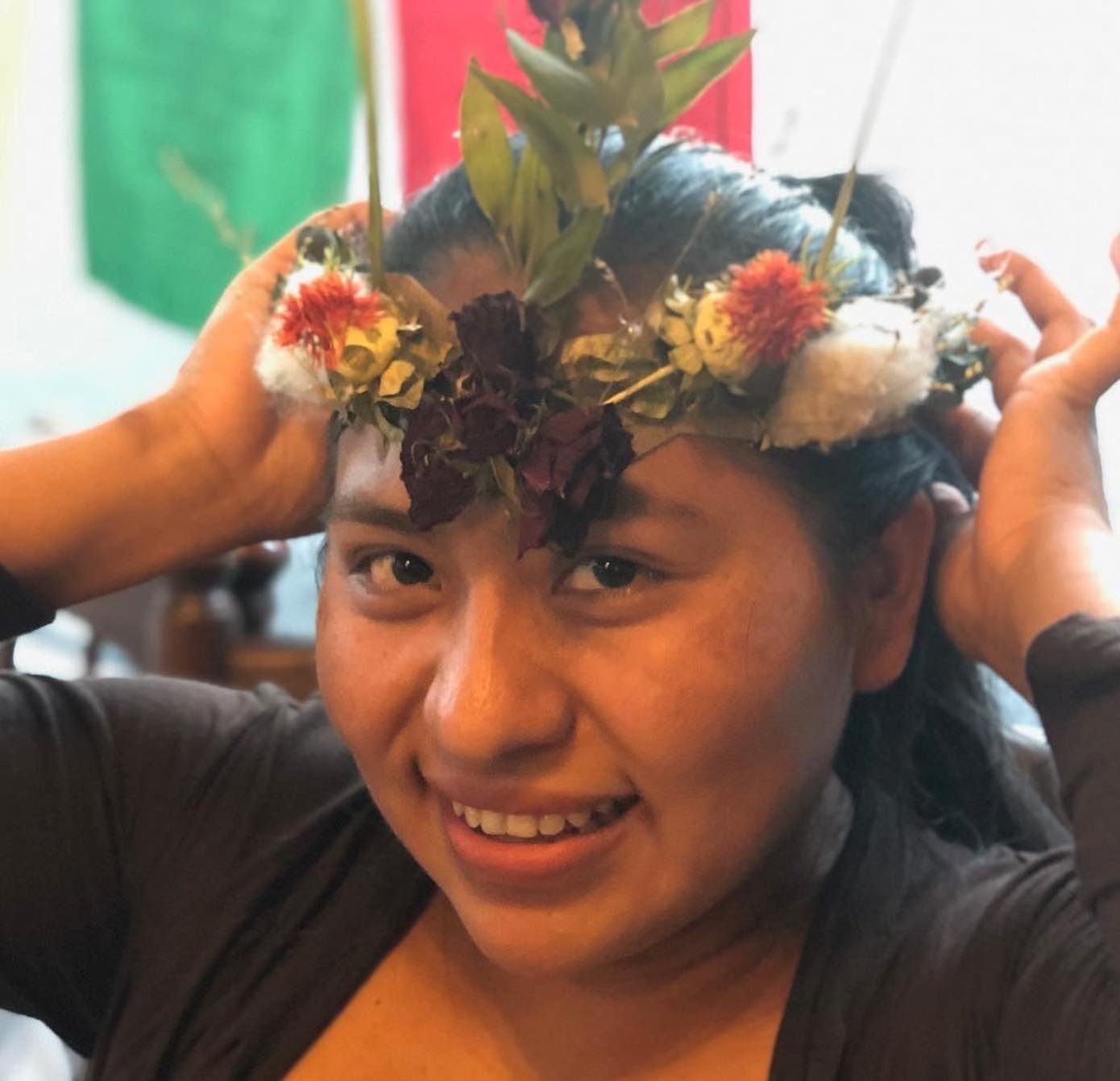Flower Crown Fun!
LUMINOUS Dreamers (left to right) Nati Zuniga, Jenny Wonderling (Crown by Melissa Hewitt) and Mike Dwyer Photo by Piotr Redlinski
Lots of friends who came to LUMINOUS have wanted to know how to make the flower crowns that so many of our performers wore, so here’s a little fun tutorial! The history of making crowns from natural materials can be found across cultures and centuries, is steeped in tradition and symbolism, has been a way of demarcating status, or has been done simply as joyous adornment. In Ancient Rome and Greece they were made from myrtle, wool, as well as flowers and plants that had particular associations and healing properties. For Circle Creative Collective and the LUMINOUS Dreamers- flower crowns represent celebration of life and unique creative expression! We hope you will try this at home or in your school or work place. Let the stories flow as you work, appreciate the slow creative process, choose your materials with love and respect for Nature, and be forgiving with yourself. There’s no “right” with this, so just enjoy the exploration of color, textures and patience with curiosity!
Sibylle Jud as Bodhisattva. Photo by Piotr Redlinski
Let’s CREATE! What you will need to get started and important things to know…
Factors that will affect your crown's end results and your choices of materials:
Access to plant/flower species might depend on season
What are your style/color goals for your event
Do you want to make a crown of fresh flowers that stay fresh looking, how soon will you be wearing your crown and do you need your flower crown to last?
Or do you want to make a dried flower crown?
Do you want to create a Halo* Crown or Cluster* Crown? (*These will be defined later.)
Smaller flower buds will be better for the Halo style. For the Cluster Crown style (defined below), larger accent flowers help to create a visual focal point, complemented by smaller flowers.
Some flowers wilt more quickly, others have more longevity, even out of water. If you will be making your crowns of fresh flowers some hours before your event, you will need to make sure you have access to refrigeration and otherwise consider using dried or artificial flowers.
Onome as Earth in LUMINOUS. Photo by Matt Petricone Crown by Melissa Hewitt
Some potential supplies you will need on hand:
Dried Flowers and/or fresh Flowers
Trim greens and other bouquet fillers
Other potentials: acorns, pine cones, berry clusters
Wire cutters or strong scissors
Leather, cardboard, or bark for under layer
If making a Halo Crown: floral tape and floral wire or jute wire (preferred) if you can find
Willow can also be substituted for wire, with some alterations of steps
And don’t forget to get creative and try your own techniques and flourishes!
LUMINOUS Dreamer, Johanna Cabrera. Photo by Piotr Redlinski
MAKING A CLUSTER CROWN:
SOME LIKE IT HOT! (Yes, for this project get your glue gun heated up— as these work much better than glue sticks or liquid glue.)
• Create the band either through leather, cardboard, bark or fabric.
• You can close the back by first fitting it to your head and gluing it to itself, or by making slits and adding ribbon so anyone can wear it.
• Go wild glueing on what feels just right to you. Keep turning it to see ht it looks like from all sides.
Photos below by Matt Pertricone. crowns and mask by Melissa Hewitt.
MAKING A HALO CROWN (below):
The Wire Frame: For the main wire frame shape, our team prefers using jute wire, but floral wire will also work. (The latter works best if reinforced with additional layers of wire and then taped together with floral tape, spun round and round from tip to tip.) Other wires can also work so experiment.
Cut your initial wire long enough to go around the wearer's head, then create loops on each end.
A one-size-fits all option is easily made by making it a bit shorter than your own head's circumference, and once finished tie a ribbon or jute cord into each of those loops to make a bow.
Below left crown by Mirabai Trent
As you weave or attach your flowers to the frame wire, you will be wrapping each flower or flower-cluster with flower tape. Flower clusters should first be bound to themselves, then attached to the base wire.
One Direction: Keep in mind that flowers should be placed in the same direction and towards the end you are starting with so that stems get hidden in the weave as you go. You will be wrapping either your cluster, or a single flower, or a bit of greenery with the floral tape by winding it round and round (sticky side down) between 3 and 5 times. Pull the tape just enough to create tension, then release it just enough to not break it before you intend to. Then tear off the end and start again.
Note: Try and flatten out the lumpy, pokey bits and tape or wire down before you weave in the next cluster or flower.
The floral tape has multiple benefits including:
Helping to keep moisture in the stems.
It makes sure there are no wires that are sticking out and could cause a poke-hazard
It will help the crown to feel more comfortable to the wearer.
Troubleshooting tip:
If you break a flower head from its stem, don't fret! Just poke a piece of floral wire through the nub at the base of the flower to create a faux stem.
Once your crown is done:
Put it on and be the sovereign being you are!
If fresh and you are not wearing your crown immediately you will want to refrigerate it. Spray it with a bit of water first, place it into a plastic bag, then pop it into your fridge. Even if it is just a few hours before your event, this trick will help make sure your flowers stay perky.
HUGE THANKS TO THE BEAUTIFUL LATINA COMMUNITY IN KINGSTON WHO MADE THE CROWNS WE SOLD AT THE EVENT. ALL PROCEEDS OF THOSE SALES WENT DIRECTLY TO THESE WOMEN…AND THANKS TO TILDA’S RESTAURANT FOR OFFERING THE SPACE FOR OUR WORKSHOP.
Why do we love roses so much especially and how long have humans been wearing flower crowns?
There is evidence that people have been gathering roses specifically to make crowns for more than 5000 years and that these symbols of love and devotion were the first cultivated flowers. 5 petalled roses have actually been found in the archaeological record from 35 million years ago— here on earth long before hominids ever evolved!
Working with flowers can bring us inner peace? Yes. Really.
Offering a kind of bridging between meditation and creativity, making flower crowns offers more than just pretty fun...
Meditation has many proven health benefits and not only helps to focus and redirect our thoughts but also elevates moods and brings a brighter, more positive and even compassionate outlook. It cultivates self-discipline, brings healthy sleep patterns, increases pain tolerance, and much more. A quick perusal on the web offers all the studies you may need to back up these facts.
At the LUMINOUS Altar with Johanna Cabrera, Mirabai Trent and Nati Zuniga (left to right). Photo by Piotr Redlinski
YES, PLAYYY!
We put so much pressure on ourselves in this culture to do things right and even "perfectly." Now, before you even start to make your crown, you can throw all that judgment straight out the window. It's time to PLAY! It's time to get CREATIVE! It's time for you to express yourself. And what could be more forgiving or inspiring than flowers?
So take a deep breath. Maybe even close your eyes and take another deep breath, bringing it all the way down into your feet. Then even lower down into the soil. And now you can start to let your creative visions rise up. What do you want your crown to look like? Or just let the beauty of your creation evolve one flower at a time.
DID YOU KNOW: Getting creative and making things with our hands also has proven benefits? To name a few:
It improves confidence and self-esteem
Helps develop fine motor skills
Cultivates patience
Increases concentration and enhances brain productivity
Offers an outlet and a beautiful way of alchemizing emotions
Increases empathy
Relieves stress
It's great for people with illnesses to reduce stress and feelings of loneliness, and can even reduce the effects of health conditions
And of course it's fabulous and inspiring for healthy and joyous folks too!
LUMINOUS Dreamers: Mirabai Trent, Onome, and Antonin Hewitt (left to right)
A kind of meditation in action.
For millennia in ancient Asia, the Middle East, Europe, and elsewhere, the first rosaries and malas were thought to be made not of beads but flowers. It was believed that with each flower that passed from someone's fingers into a crown or mala, a prayer or intention was also woven in. It's an interesting thing to consider as you create yours.
As you make your crown, you can allow each little step to help bring you into a fuller presence with yourself. With this moment. And this one. While you snip, tuck, bend, and make beauty happen, try to focus fully on what you are doing. Not how, but what, with curiosity and patience.
After a while, maybe even consider that with each of your actions, you can think about a thing you are grateful for. Or that every flower added represents another expression of your gratitude.
Think of someone you love while you work.
Or someone who needs love and support sent to them.
Or merely enjoy a single thought at a time. Fully witnessed before you let it pass. And then enjoy another.
As explained in The Way of The Rose by Clark Strand and Perdita Finn, "The first mention of a rosary-like devotion is over 5000 years old and refers to a japamala, which in Sanskrit means "muttering garland." After you make a crown in this way, you may begin to know why. "Like the word rosary, mala originally referred not to a circle of beads but to a sacred circle of flowers."
Soon we hope you’ll know why for yourself! And most importantly, don't forget to have fun!
Thanks and with love,
The Circle Sisters
